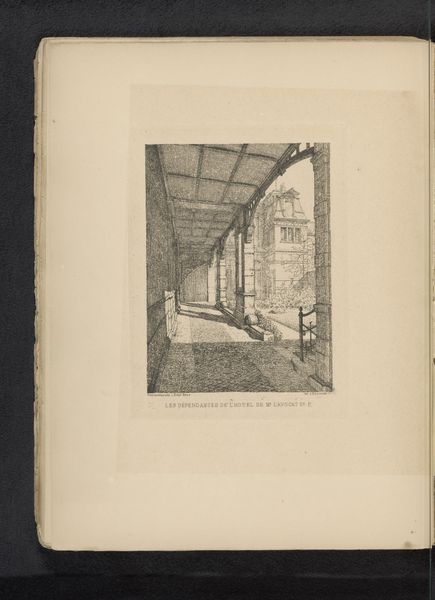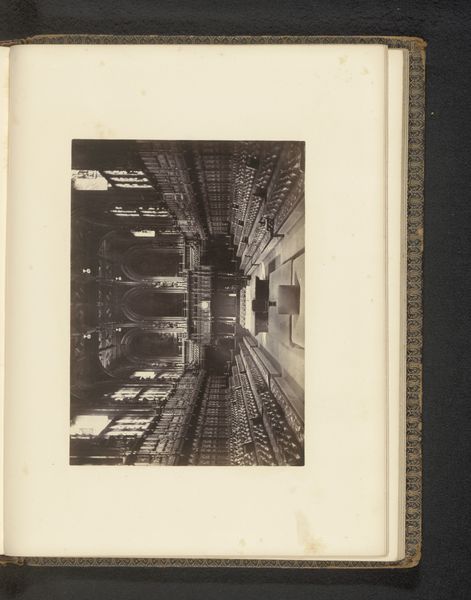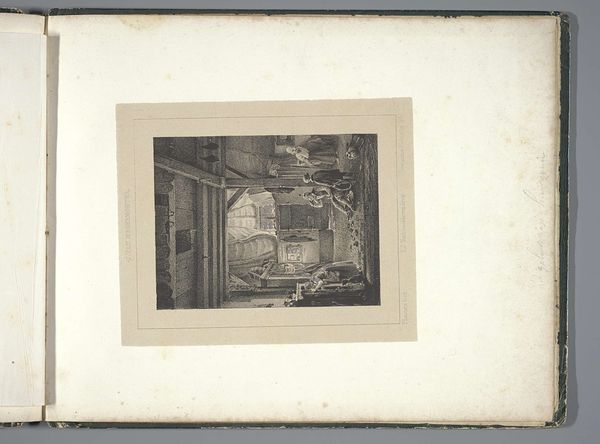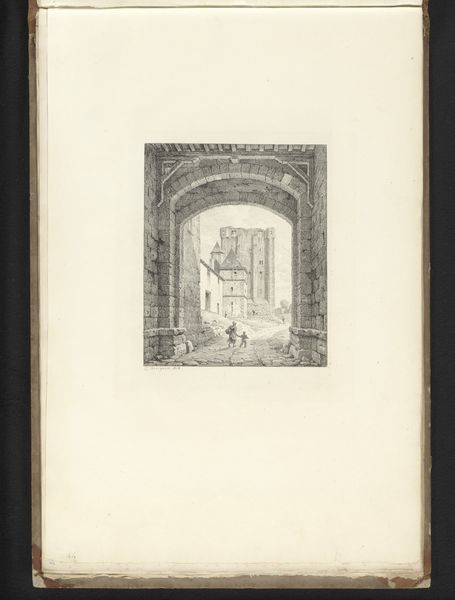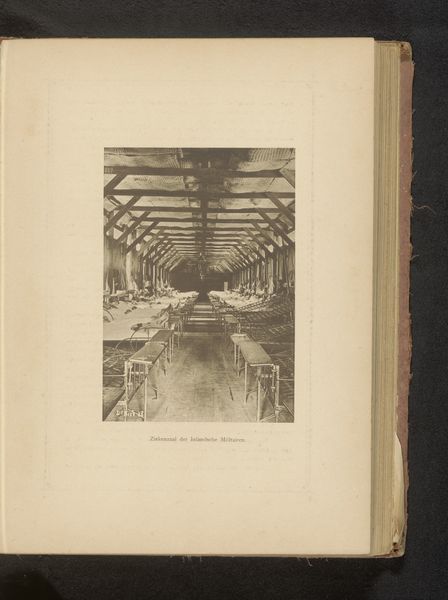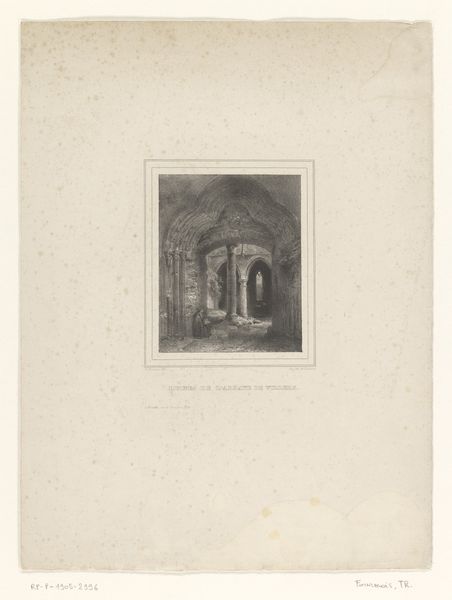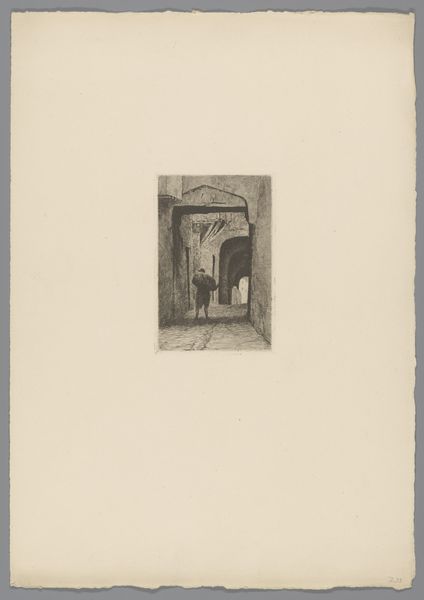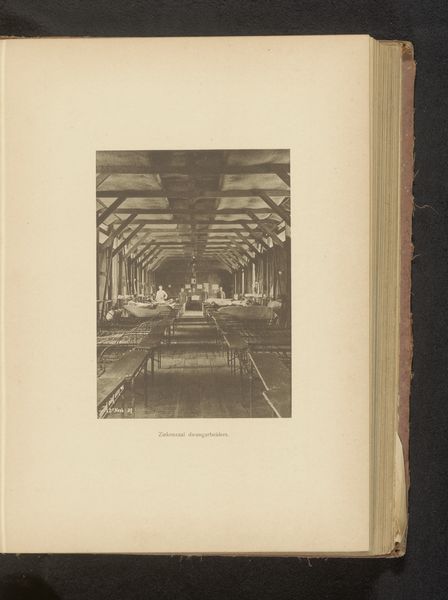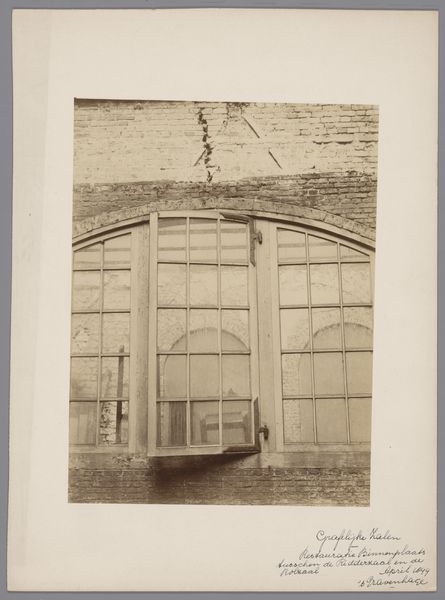
drawing, graphite
#
precisionism
#
drawing
#
coloured pencil
#
graphite
#
cityscape
#
modernism
#
realism
Dimensions: overall: 44.7 x 35 cm (17 5/8 x 13 3/4 in.)
Copyright: National Gallery of Art: CC0 1.0
Curator: Welcome. Here we have Mark Rothko’s 1933 graphite and colored pencil drawing, “City Street.” Editor: My first impression is…claustrophobia. That long, narrow tunnel of girders receding into shadow—it feels like a visual metaphor for being trapped. Curator: Observe the meticulous precision of line and form, typical of the Precisionist style which Rothko explored early in his career. The composition hinges on the rhythmic repetition of vertical supports against receding linear perspective, generating a profound sense of depth. The structural skeleton predominates. Editor: Yet there’s something unsettling about it. The arches evoke a cathedral, but a grimy, industrial one. Are those elevated train tracks above? It’s almost as if he's commenting on how the city's grand aspirations have become weighed down by something heavy, maybe the pressures of the time. Consider the social upheaval of the early thirties. Curator: Certainly, one can decode a commentary on modern urban existence. However, consider the visual dynamics at play. Rothko carefully modulates light and shadow, thereby establishing planes within the spatial recession. What semiotic codes are being established by these techniques? Editor: It’s like a prison of progress! And this work comes at a time before he goes all in on abstract color fields, of course. Perhaps he realized that emotional impact wasn't rooted in depicting actual physical, recognizable structures, and abandoned it in favor of directly tapping our subconscious using abstraction instead. Curator: That could imply a radical departure, but the careful attention to plane and color as intrinsic structural elements persists through every stage of his career. What appears visually dissimilar nonetheless maintains an underlying commonality of language and form. Editor: Maybe. But in my eyes, this city is not about progress at all. It is about burden and darkness. The bare buildings on the side—empty and unadorned. The long road—ominous, leading into nothingness. Rothko captured something essential about how we feel overwhelmed and made insignificant. Curator: A compelling reading that takes into account this crucial transition in Rothko's art, highlighting visual devices and their underlying, shared formal intentions. Editor: And a fine summation of a haunting cityscape brimming with symbolist potency! Thank you.
Comments
No comments
Be the first to comment and join the conversation on the ultimate creative platform.


